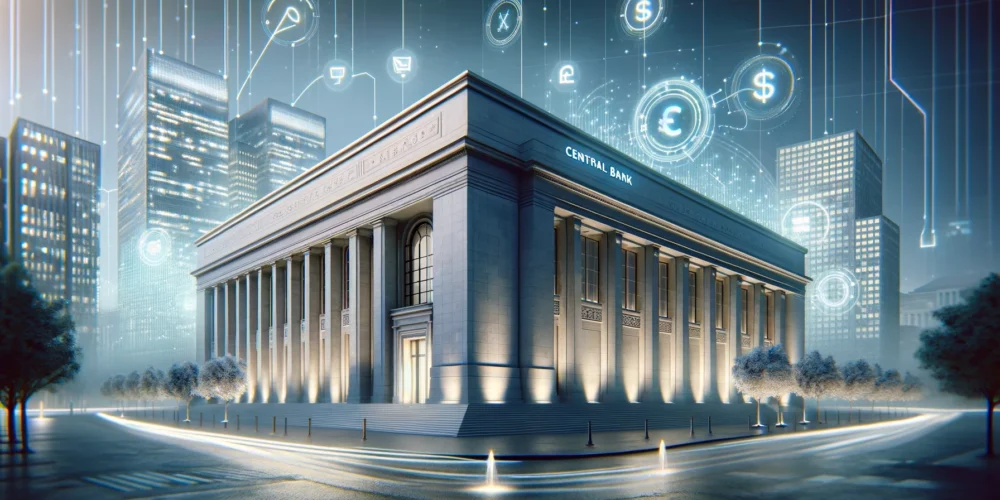The Reserve Bank of India (RBI) is breaking new ground in financial technology with its ambitious plans for asset tokenization using its wholesale central bank digital currency (CBDC). This innovative step not only aims to enhance market efficiency but also to increase transparency and broaden access to financial markets. Early outcomes from pilot programs, particularly involving Certificates of Deposit (CDs), signal promising advancements as the RBI prepares to expand its scope to include government bonds and deposits, bolstered by strategic initiatives like the Unified Markets Interface (UMI).
RBI’s Tokenization Initiative and UMI
The RBI’s initiative focuses on transforming financial settlements through the tokenization of assets using the wholesale CBDC, known as e₹-W. Central to this initiative is the development of the Unified Markets Interface (UMI), which aims to serve as a next-generation infrastructure designed specifically for this purpose.
“The Unified Markets Interface will have the capability to tokenize financial assets and settlements,”
noted Sanjay Malhotra, adding that initial pilot results on the issuance of Certificates of Deposit have been encouraging in improving market efficiency.
This pilot program isn’t about generating transaction volumes but rather about testing the underlying technology, as highlighted by Deputy Governor T Rabi Sankar.
“We are thinking of trying out tokenization of assets and government bonds. The idea is to try the technology to improve the market landscape,”
he explained, emphasizing a careful and experimental approach to this transformative technology.
Benefits and Applications of Asset Tokenization
Tokenization essentially converts real-world assets into digital tokens on a blockchain, fundamentally altering how assets are owned and traded. This process enables fractional ownership, significantly enhances transparency, and can facilitate instant settlements through smart contracts. Such capabilities not only expand access to financial markets but can also optimize cross-border payments, ensuring quicker transactions and reducing costs associated with traditional settlement systems.
“Asset tokenization offers new possibilities for Indian financial markets in expanding access, improving transparency, and enhancing settlement efficiency through smart contracts,”
stated Malhotra. The RBI aims to leverage this promising technology to facilitate trading of government securities using digital currency, allowing for instantaneous settlement and encouraging broader participation in the market.
Pilot Programs and Technology Foundations
At the heart of this modernization effort lies the wholesale CBDC, e₹-W, which serves as the technological foundation for these pilot initiatives. Preliminary pilots focusing on Certificates of Deposit hint at a future where market efficiencies can be greatly enhanced. These systems are being tested on robust platforms, potentially utilizing Hyperledger Fabric for its scalability and security.
While the wholesale CBDC shows promise, the realm of retail CBDC adoption faces its challenges. As one banker noted,
“Consumers are already using UPI, making the idea of saving in a separate digital wallet less appealing.”
Though the RBI aims for 1 million daily transactions with the wholesale CBDC, current volumes have varied, sparking discussions about the next steps, including exploring both offline and cross-border payment solutions.
Data Integration and Financial Inclusion Efforts
Integral to the RBI’s vision is the Account Aggregator (AA) framework, designed to empower individuals to securely share their financial data with regulated entities. This system has made significant strides, showcasing operations involving 17 AAs and 650 Financial Information Users (FIUs), processing over 3.66 billion data requests.
“We need to develop DPI for data integration to widen and deepen financial inclusion,”
explained Malhotra, illustrating the RBI’s commitment to responsible data management.
Furthermore, the Unified Lending Interface (ULI) provides crucial support in bridging credit gaps within the populace. With 3.2 million loans sanctioned, totaling ₹1.75 trillion, the ULI aims to facilitate data-driven credit models even for those without a prior history. This nuanced approach underscores the potential of data integration to democratize financial access and empower previously underserved individuals.
Global Context and Central Bank Perspectives
The RBI’s push towards digital transformation occurs against a backdrop of global advancements in central bank digital currencies (CBDCs). The Bank of England’s Sasha Mills has underscored the necessity for central bank money to interact with new technologies, warning against the potential risk of high-value wholesale settlement shifting away from stable central bank frameworks.
“If central bank money cannot interact with new technologies, it could undermine financial stability,”
Mills highlighted.
The Federal Reserve is also examining the role of CBDCs in wholesale payments, noting that while a new form of central bank money might not be essential, adaptability and risk management are critical components of evolving financial systems. Internationally, the Bank for International Settlements (BIS) Innovation Hub is undertaking numerous CBDC initiatives, indicating that the integration of central bank assets with blockchain technology is a global trend.
Challenges and Future Digital Finance Journey
Despite significant progress, challenges abound in the journey toward full digital finance integration. Key obstacles include enhancing the AA framework’s capability to integrate more financial data, ensuring interoperability, and addressing cybersecurity risks. Deputy Governor T Rabi Sankar has cautioned that with advancements in artificial intelligence and quantum computing, traditional encryption systems may need complete overhauls.
“Things have changed rapidly, laws will have to catch up to these technological advances,”
he remarked, emphasizing the importance of an agile regulatory framework. Sanjay Malhotra closed with a forward-looking perspective:
“We stand at an important juncture in our digital finance journey. The next phase must build on this strong foundation while ensuring trust and stability remain central themes.”
This sentiment encapsulates the RBI’s cautious yet optimistic approach to navigating the digital landscape.
A New Era of Financial Inclusion Awaits
As the Reserve Bank of India’s tokenization initiatives take shape, they hold the promise of fundamentally transforming financial landscapes across the nation. With a focus on responsibility, transparency, and efficiency, the RBI is poised to broaden access to financial markets for countless citizens yet to experience the benefits of digital finance. As this journey unfolds, the stakes are high and the outcomes could redefine participation in India’s economy, making it essential for stakeholders to engage, adapt, and innovate for a virtually connected and inclusive future.





